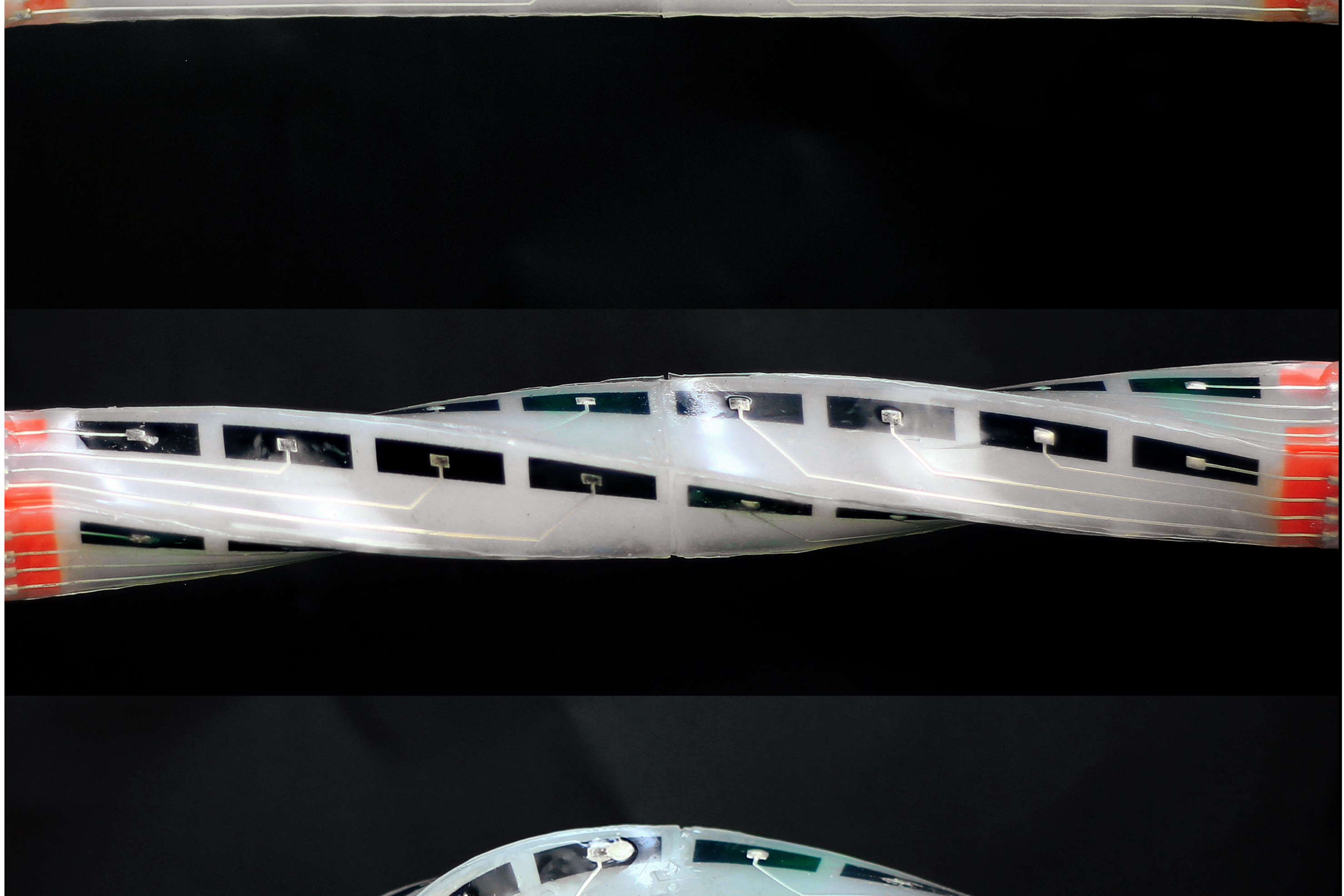Robots given physical self-awareness with new electronic skin
Technological breakthrough marks ‘a step-change in the sensing capabilities of soft robots’, researchers say

Scientists have created electronic skin that can give physical self-awareness to flexible robots for the first time.
A team from the University of Edinburgh said the devices could aid with people’s mobility or assist with surgical procedures by precisely detecting their movements in the most sensitive of surroundings.
The stretchable e-skin is used on soft robots to provide them with a level of physical self-awareness similar to that of people and animals.
Soft robots are usually made of pliable materials rather than metal or plastic, and e-skin could have a range of applications, including in surgical tools, prosthetics and devices to explore hazardous environments.
Dr Yunjie Yang, of the university’s School of Engineering, who led the study, said: “The perceptive senses endowed to robotic devices by this new technology are similar to those of people and animals.
“This new level of physical self-awareness represents a step-change in the sensing capabilities of soft robots.”
Unlike traditional robots, which have a set range of movements, soft robots are flexible.
This poses a major challenge to developing the sensing systems that are essential for robots to carry out precise tasks and interact safely with people and the environment, researchers say.
Without e-skin, it is hard for soft robots to understand their own motion and shape, and how these qualities interact with their environment.
The University of Edinburgh team is the first to develop technology that overcomes this problem and provides soft robots with highly accurate, real-time sensing abilities.
The team tested the e-skin by fitting it to a soft robot arm. They found the technology was able to sense a range of complex bending, stretching and twisting movements across every part of the device.
The study, published in the journal Nature Machine Intelligence, also involved the University of Hong Kong.
Study co-leader Dr Francesco Giorgio-Serchi, also of the School of Engineering, said: “The flexibility of the technology we have developed means it could be applied to various soft robots to enable them to accurately perceive their own shape and movements.
“Ultimately, that means we are now closer to making some of the most exciting ideas in soft robotics a reality.”
Researchers have previously used 3D printing technologies to give robots a sense of touch through artificial skin.
Last year, a team from the California Institute of Technology (Caltech) developed a type of electronic skin that allows robots to sense temperature, pressure and even toxic chemicals.
Additional reporting from agencies.

Join our commenting forum
Join thought-provoking conversations, follow other Independent readers and see their replies
0Comments